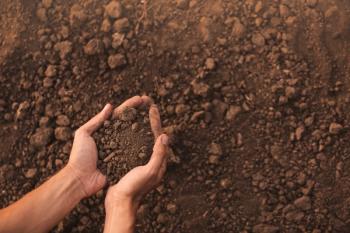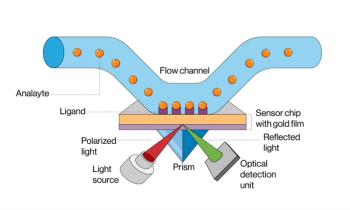
AI and Infrared Light Team Up to Advance Soil Carbon Monitoring
A team of international researchers has developed a faster, more accurate method to analyze soil carbon fractions using mid-infrared spectroscopy and deep learning. Their approach preserves the chemical balance of soil organic carbon components, paving the way for improved climate models and sustainable land management.
Turning Soil Science into High-Tech Precision
Soil scientists have long struggled with labor-intensive and expensive processes for measuring soil organic carbon (SOC) fractions, a key component in understanding soil health and climate change. Now, an international team led by researchers from Curtin University (Perth, Australia) has used deep learning and mid-infrared (MIR) spectroscopy to simplify and speed up this process, without sacrificing scientific accuracy (1).
The study, published in Geoderma, is titled “Deep Learning of the Particulate and Mineral-Associated Organic Carbon Fractions Using a Compositional Transform and Mid-Infrared Spectroscopy.” It introduces a novel approach that combines a compositional data transformation with convolutional neural networks (CNNs) to estimate critical SOC fractions with unprecedented accuracy (1).
A Global Team for a Global Problem
The study involved researchers from several leading institutions:
- Curtin University, Perth, Australia (Mingxi Zhang, Zefang Shen, Lewis Walden, Farid Sepanta, Zhongkui Luo, Lei Gao, Raphael A. Viscarra Rossel)
- Centro de Estudios Avanzados de Blanes, CSIC, Girona, Spain (Oscar Serrano)
- Edith Cowan University, Joondalup, Australia
- Zhejiang University, Hangzhou, China
- CSIRO, Waite Campus, Urrbrae, Australia
Their work is a prime example of how interdisciplinary and international collaboration can tackle global environmental challenges.
SOC Fractions: The Foundation of Soil Carbon
SOC consists of various components with different chemical characteristics and stability. These are broadly categorized into particulate organic carbon (POC), which is more reactive and decomposes quickly, and mineral-associated organic carbon (MAOC), which is more stable and can persist in soil for centuries. Understanding the ratio of these fractions is essential for carbon sequestration models and sustainable land-use planning (1).
Traditional laboratory methods—such as physical separation, chemical oxidation, or thermal combustion—are accurate but time-consuming and resource-intensive. That has hindered large-scale monitoring needed for environmental management and climate policy.
Spectroscopy and Deep Learning: A Faster Path to Precision
To solve this problem, researchers used mid-infrared spectroscopy, which captures molecular vibrations in soil samples, revealing chemical signatures of carbon compounds. Spectra were collected using a high-throughput Bruker Invenio HTS-XT DRIFT spectrometer over a range of 4000–600 cm⁻¹. Each of the 397 Australian soil samples was finely ground, with measurements calibrated using a gold standard to ensure spectral accuracy. Various infrared spectroscopy methods are being used for research into Earth’s mineralogy, geo-energy research, and mining exploration (1–3).
What sets this study apart is the application of the centered log ratio (CLR) transformation, which adjusts the SOC data to respect its compositional nature—namely, that the sum of all SOC fractions equals total SOC. This approach avoids common estimation errors where the predicted sum of parts does not match the whole (1).
The transformed data was then modeled using CNNs, which outperformed the more traditional CUBIST regression algorithm. The CNN models achieved Lin’s concordance correlation coefficients of 0.58 for macroaggregate POC (POCmac), 0.86 for microaggregate POC (POCmic), and 0.94 for MAOC—marked improvements over previous methods (1).
Explainable AI Enhances Interpretability
Beyond raw performance, the team applied SHapley Additive exPlanations (SHAP) to interpret the CNN model's decisions. This revealed which parts of the MIR spectra were most influential in predicting each SOC fraction. The findings highlighted key organic and inorganic functional groups—varying by fraction and land use—deepening scientific understanding of SOC chemistry (1).
“The CLR transform allowed us to preserve the relative proportions of carbon fractions, which is crucial for accurate interpretation and modelling,” said lead author Mingxi. “Combining this with explainable AI gave us both accuracy and insight” (1).
Implications for Weather Science and Soil Management
By making SOC fraction estimation faster and more affordable, this method enables large-scale monitoring programs needed to manage soil health and carbon stocks. It offers practical tools for policymakers, farmers, and conservationists alike.
“Accurate, scalable soil carbon measurements are essential for implementing effective climate mitigation strategies,” said senior author Raphael Viscarra Rossel. “This research brings us one step closer to that goal” (1).
This research offers a new benchmark in soil spectroscopy, proving that when cutting-edge AI meets infrared spectroscopy, we can see deeper into the Earth’s mysteries—and potentially into the future of sustainable land use.
References
(1) Zhang, M.; Shen, Z.; Walden, L.; Sepanta, F.; Luo, Z.; Gao, L.; Serrano, O.; Rossel, R. A. V. Deep Learning of the Particulate and Mineral-Associated Organic Carbon Fractions Using a Compositional Transform and Mid-Infrared Spectroscopy. Geoderma 2025, 455, 117207. DOI:
(2) Zhu, H.; Lu, Y.; Pan, Y.; Qiao, P.; Raza, A.; Liu, W. Nanoscale Mineralogy and Organic Structure Characterization of Shales: Insights via AFM-IR Spectroscopy. Adv. Geo-Energy Res. 2024, 13 (3), 231–236. DOI:
(3) Qiu, J.; Liu, W.; Chen, J.; Lai, X.; Zhong, X.; Li, J.; Long, H. Alteration Mineralogy, Characteristics and Shortwave Infrared Spectroscopy of White Mica in the Zijinshan Ore Field, Fujian Province: Implications for Porphyry Cu Prospecting. Ore Geol. Rev. 2024, 168, 106065. DOI:
Newsletter
Get essential updates on the latest spectroscopy technologies, regulatory standards, and best practices—subscribe today to Spectroscopy.





